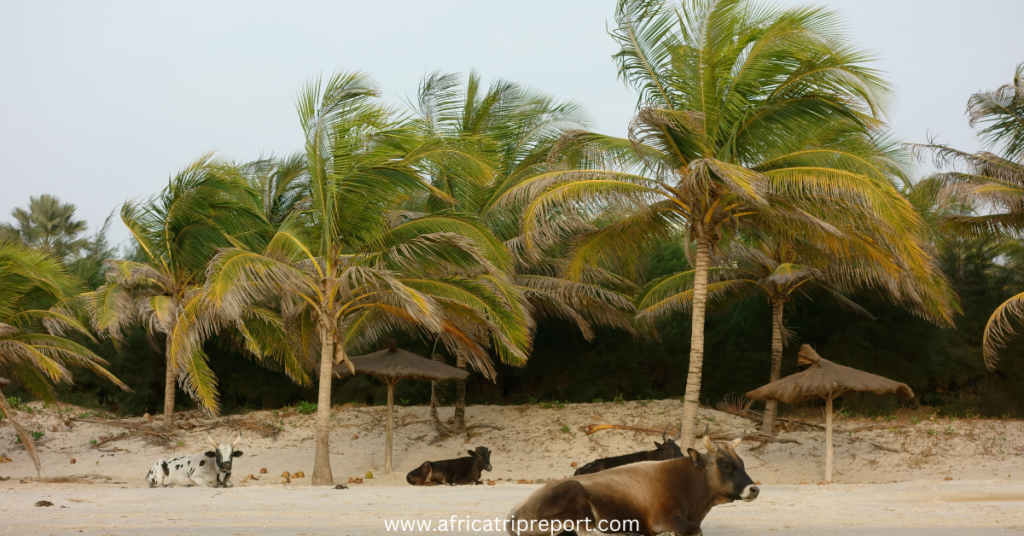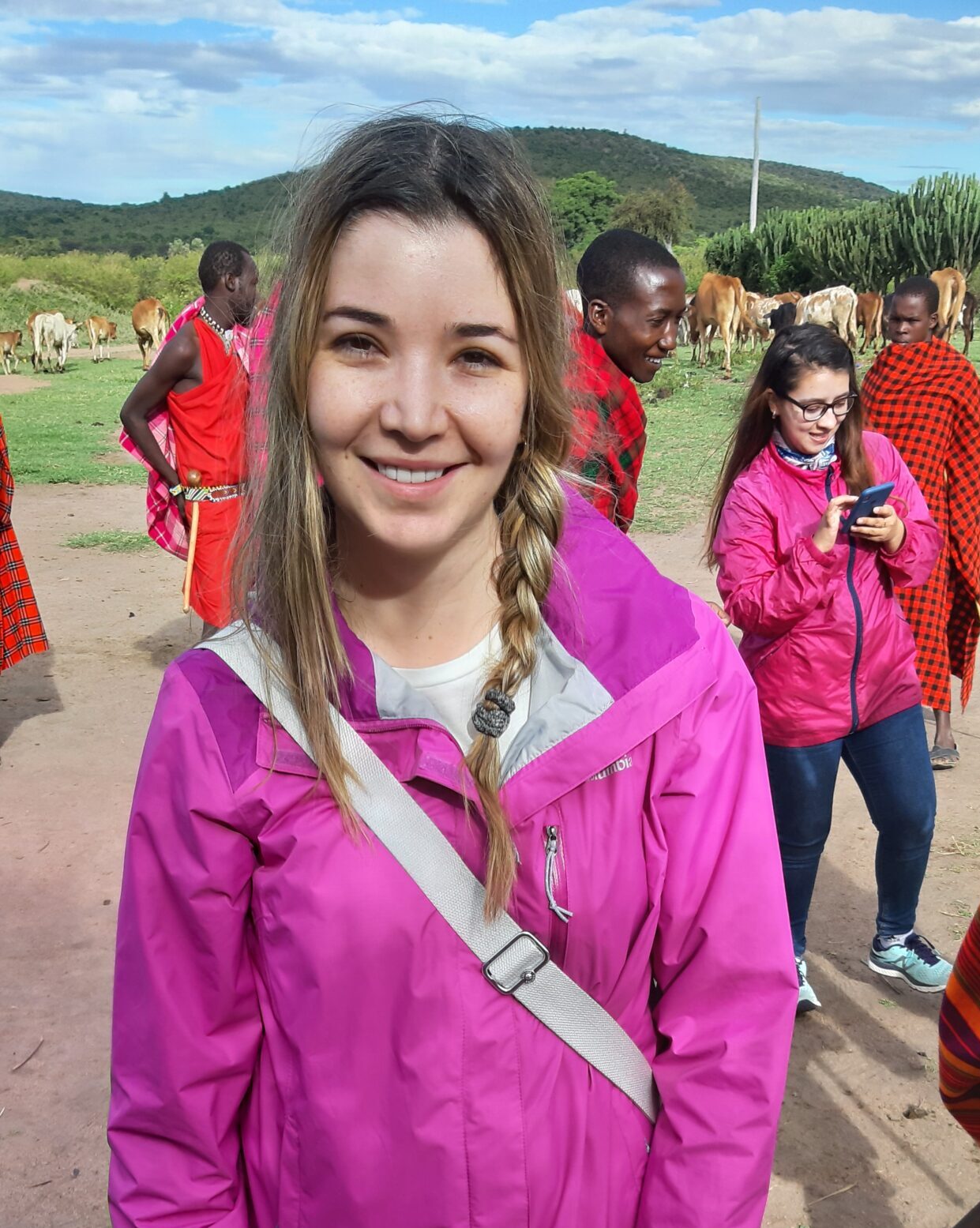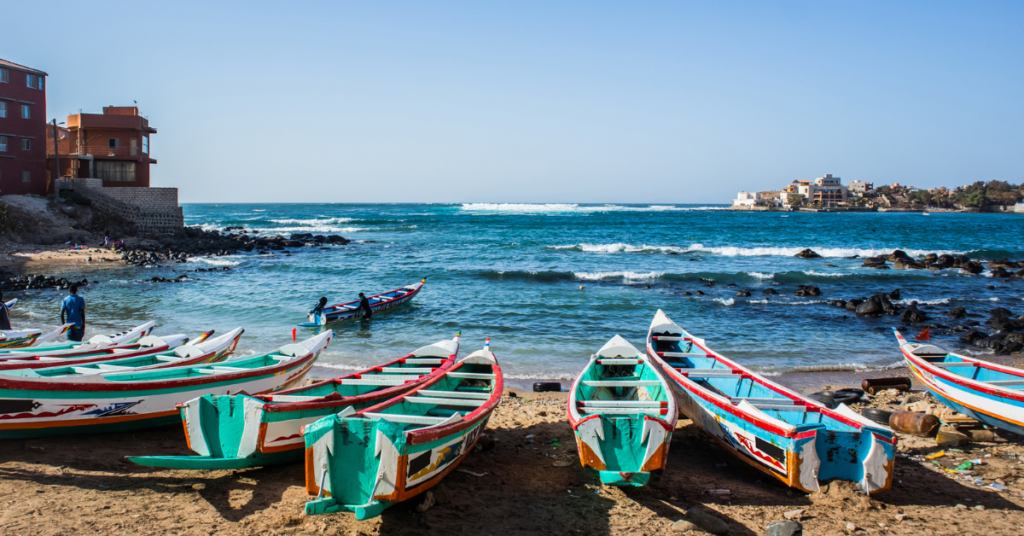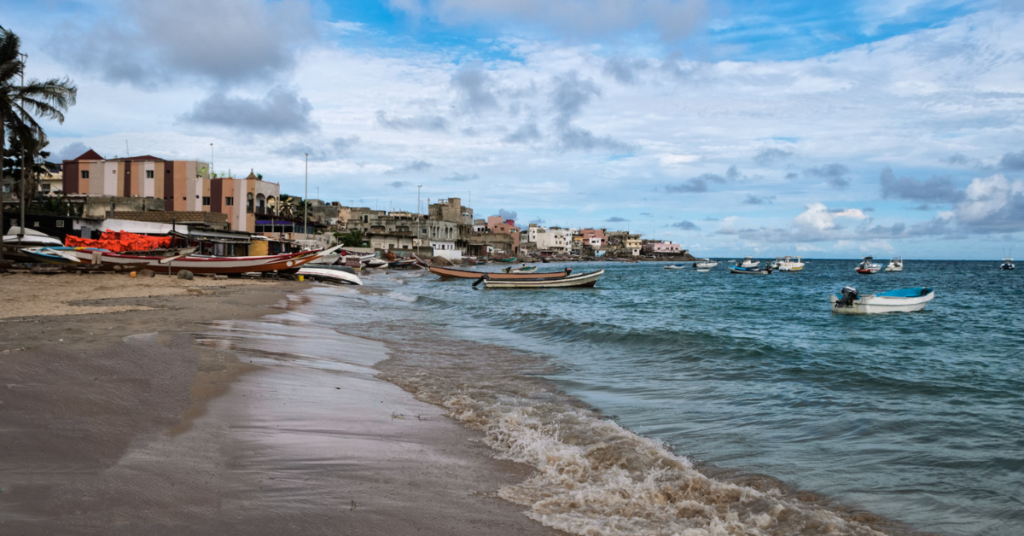Welcome to the definitive guide to Senegal’s most intriguing and unknown region, Ziguinchor and the Casamance. The Casamance, which lies in the south of the nation, is distinguished by its many different cultures, stunning scenery, and distinctive customs. The Jola, Mandinka, and other ethnic groups, each with their own language, traditions, and beliefs, are found in the area. The major city and commercial hub of the Casamance is Ziguinchor, which provides a distinctive fusion of colonial architecture, humming marketplaces, and local crafts.
This book will take you on a tour of Ziguinchor and the Casamance’s natural beauty, history, and culture. You’ll learn about the top attractions, restaurants, and accommodations in the area, as well as useful travel advice. The Casamance has plenty to offer everyone, regardless of whether they are interested in animals, beach life, or cultural events. Pack your bags and come on an exciting journey with us to one of West Africa’s most beautiful regions.

Getting to Ziguinchor and the Casamance
Air travel is the most practical means of reaching Ziguinchor. Senegal Airlines and Air Senegal provide frequent flights from Dakar to Ziguinchor Airport. The flight is only an hour long, and prices are typically reasonable. There are more connecting flights from other Senegalese and West African cities.
There are various ways to get to Ziguinchor if you prefer overland travel. From Dakar or other significant Senegalese cities, buses are available. The area is served by a number of bus companies, including Gana Transport and Dakar Dem Dikk. Another choice is a private car or taxi, but these can be pricey. Although they can be crowded and uncomfortable, shared taxis or minibuses are a well-liked and more cheap mode of transportation. You can rent a motorcycle or bike to independently explore the area if you’re feeling daring.
Finally, you can also travel to Ziguinchor by water. There are ferry services from Dakar and other coastal cities to Ziguinchor, but the schedules can be irregular and the journey can take several hours. Private boats or cruises are another option, but they can be expensive and not as readily available.
Visa and travel requirements
You should research the necessary visas for your country of origin before coming to Senegal. A visa is typically required for travelers, and it can be obtained at Senegalese embassies or consulates. Proof of your travel insurance and immunizations may also be requested. Be sure to research the most recent health and travel advice for the area before you travel.

Malaria
The Casamance region is considered a high-risk area for malaria. To protect yourself from malaria, use insect repellent, wear long sleeves and pants, and sleep under a mosquito net. Consider taking antimalarial medication, which is available by prescription.
Best time to visit
Between November and May, when the weather is dry and pleasant, is the perfect time to visit Ziguinchor and the Casamance. The rainy season lasts from June to October; during this period, several attractions could be closed and the roads might be challenging to travel. With its rich foliage and vivid fauna, the rainy season may nevertheless be a lovely time to travel.
There are a number of festivals and events held throughout the year, such as the Kumpo in January and the Jola Festival in August, if you’re interested in those. Remember that between December and February is the busiest travel period, so costs and crowds may be higher then.
You can also read The Ultimate Senegal Trip: How Many Days To See It All
Currency and money matters
Visitors can change money in Casamance by using banks, bureau de change, hotels or street money changers, but it’s important to compare rates and fees and ensure they are using a reputable and secure service. Beware that it’s generally not recommended to exchange money with street money changers, as they may offer unfair exchange rates or counterfeit currency, but some travelers do choose to use them as a last resort.
Communication and language tips
While French is the official language of Senegal, many people in Ziguinchor and the Casamance region also speak Wolof and other local languages. Visitors should consider learning some basic phrases in the local language, or bringing a translation app.

History and architecture
Between November and May, when the weather is dry and pleasant, is the perfect time to visit Ziguinchor and the Casamance. The rainy season lasts from June to October; during this period, several attractions could be closed and the roads might be challenging to travel. With its rich foliage and vivid fauna, the rainy season may nevertheless be a lovely time to travel. There are a number of festivals and events held throughout the year, such as the Kumpo in January and the Jola Festival in August, if you’re interested in those. Remember that between December and February is the busiest travel period, so costs and crowds may be higher then.
Markets and shopping
A variety of goods, including fresh vegetables and handmade handicrafts, may be found in Ziguinchor’s bustling markets. The Marché Saint-Maurice is the biggest and most well-known market in the city, where you can buy anything from spices to ethnic apparel. The Marché Tilène is a well-known market where you can discover lovely textiles and handmade items created by regional craftsmen.
Food and drink
Senegalese cuisine is known for its bold flavors and unique ingredients, and Ziguinchor is no exception. The city has several restaurants and food stalls serving up delicious local specialties, such as thieboudienne (a traditional fish and rice dish), yassa (marinated meat or fish), and ceebu jen (rice and vegetables). For a refreshing drink, try the locally brewed bissap (hibiscus tea) or ginger juice.

IMPORTANT INFORMATION! Due to its coastal location and proximity to nations like Guinea-Bissau and Gambia, the region’s cuisine has been greatly affected. Thieboudienne, a savory fish and rice dish frequently served with vegetables and a hot sauce, is one of the most well-known dishes. Yassa, a marinated chicken or fish dish with onions and citrus, and “domoda,” a stew made with peanuts, are two other local delicacies.
Accommodation
Ziguinchor offers a variety of lodging choices to fit different budget and preferences. The city center is home to a number of hotels and guesthouses that provide cozy rooms and extras like Wi-Fi and air conditioning. Consider camping or staying in a traditional Jola hut outside of the city for a more distinctive experience. Also, there are a number of eco-lodges nearby that provide an opportunity to take in the area’s natural splendor.
I would advise staying at the Club Med Cap Skirring if you want a luxurious option. On the other side, Campement Ile D Egueye is the spot for you if you like a more relaxed atmosphere.
Attractions in the Casamance
The Casamance region in Senegal is known for its stunning natural beauty and vibrant cultural traditions. In this section, we’ll explore some of the top attractions in the region, including national parks, beaches, traditional villages, and festivals.
Basse Casamance National Park
With more than 500 square kilometers of lush forest, savannah, and marshes, Basse Casamance National Park is one of the top natural attractions in the area. Monkeys, antelopes, warthogs, and more than 250 different species of birds can all be found in the park. Tourists can take boat excursions to explore the mangrove swamps and the park’s canals as well as guided tours to view its varied flora and animals.

Best beaches
The Casamance region is blessed with several beautiful beaches and coastal areas, making it a popular destination for beach lovers. Cap Skirring is one of the most famous beaches in the region, with its golden sand and crystal-clear waters. Other beaches worth visiting include Kafountine Beach, Boucotte Beach, and Abene Beach, which are all perfect for swimming, sunbathing, and water sports.
You can also read Is Senegal Safe for Tourists? Everything You Need to Know
Best villages to visit
The Casamance region is home to several traditional villages and communities, where visitors can learn about the local customs and way of life. The village of Kataba is one of the most well-known, known for its beautiful traditional huts and handicrafts. Another must-visit destination is the village of Elinkine, which is located on an island in the Casamance River and is famous for its vibrant music and dance traditions.
Culture and traditions
The Casamance region is known for its rich cultural heritage and diverse traditions. In this section, we’ll explore some of the cultural highlights of the region, including its ethnic groups and languages, music and dance, arts and crafts, and religion and spirituality.

Ethnic groups and languages
The Diola, Mandinka, Fula, and Jola are among the several ethnic groups who call the Casamance region home. The area is a fascinating cultural melting pot because each group has its own distinctive traditions, customs, and languages. By visiting traditional villages, attending festivals, and mingling with local residents, tourists to the area can learn more about the many ethnic groups.
Music and dance
The Casamance region’s culture is strongly influenced by music and dance. Drums, the kora (a stringed instrument), and other percussion instruments are common in the region’s traditional music. Attending festivals and events or touring traditional villages where local musicians and dancers perform are two ways that tourists can get a taste of the region’s rich musical and dance traditions.
Religion and spirituality
There are many different religions established in the Casamance region, including Islam, Christianity, and indigenous African religions. Religion and spirituality are significant components of life there. The use of sacred plants and the execution of traditional rituals are only two examples of the region’s many traditional customs and behaviors that have their roots in spiritual beliefs and activities.

Outdoor activities and adventure
The Casamance region is perfect for water sports and other activities because to its miles of pristine shoreline. Kayaking, swimming, surfing, and kiteboarding are all great in the calm Atlantic Ocean waters. Also, a number of outer islands, such the magnificent Carabane Island, offer opportunities for travelers to participate in water sports like diving and snorkeling.
You should also know that the Casamance region is a hiker’s paradise, with several beautiful hiking and trekking trails to explore. The region’s diverse terrain includes forests, hills, and wetlands, offering visitors a range of hiking experiences. Popular trails include the hike to the top of the Collines de Koutal, which offers stunning views of the surrounding countryside, and the hike to the cascades of Eaux Claires, a series of waterfalls nestled in a beautiful forest.

Fishing and boating are also popular activities in the Casamance region, thanks to its many rivers and waterways. Visitors can go on guided fishing tours to catch a variety of fish, including barracuda and tilapia. There are also several boat tours available, including trips up the Casamance River, where visitors can see traditional fishing villages and explore the region’s lush mangrove forests.
DID YOU KNOW? The region is home to a traditional form of wrestling called “Laamb” which is popular among the local communities. The sport has its roots in ancient times and is a symbol of strength and courage. Wrestlers wear colorful traditional clothing and use a variety of techniques to try and take down their opponents.
Bottom Line
Are you ready for an unforgettable adventure off the beaten path? Look no further than Ziguinchor and the Casamance region in Senegal. This hidden gem offers a unique travel experience that combines rich culture, stunning natural beauty, and outdoor adventure. From exploring historical architecture to trekking through the jungle, this region has something for every type of traveler.

I’m a total Africa enthusiast! I’ve been exploring this amazing continent for years and I can’t get enough of its diverse cultures, stunning landscapes, and incredible wildlife. From hiking through the savannahs to sampling local cuisine, I’m all about immersing myself in everything Africa has to offer. I’m constantly on the lookout for new and exciting experiences, and I love sharing my passion and knowledge with fellow travel lovers. If you’re looking for an adventure like no other, Africa is the place to be, and I’m here to help you make the most of it!






